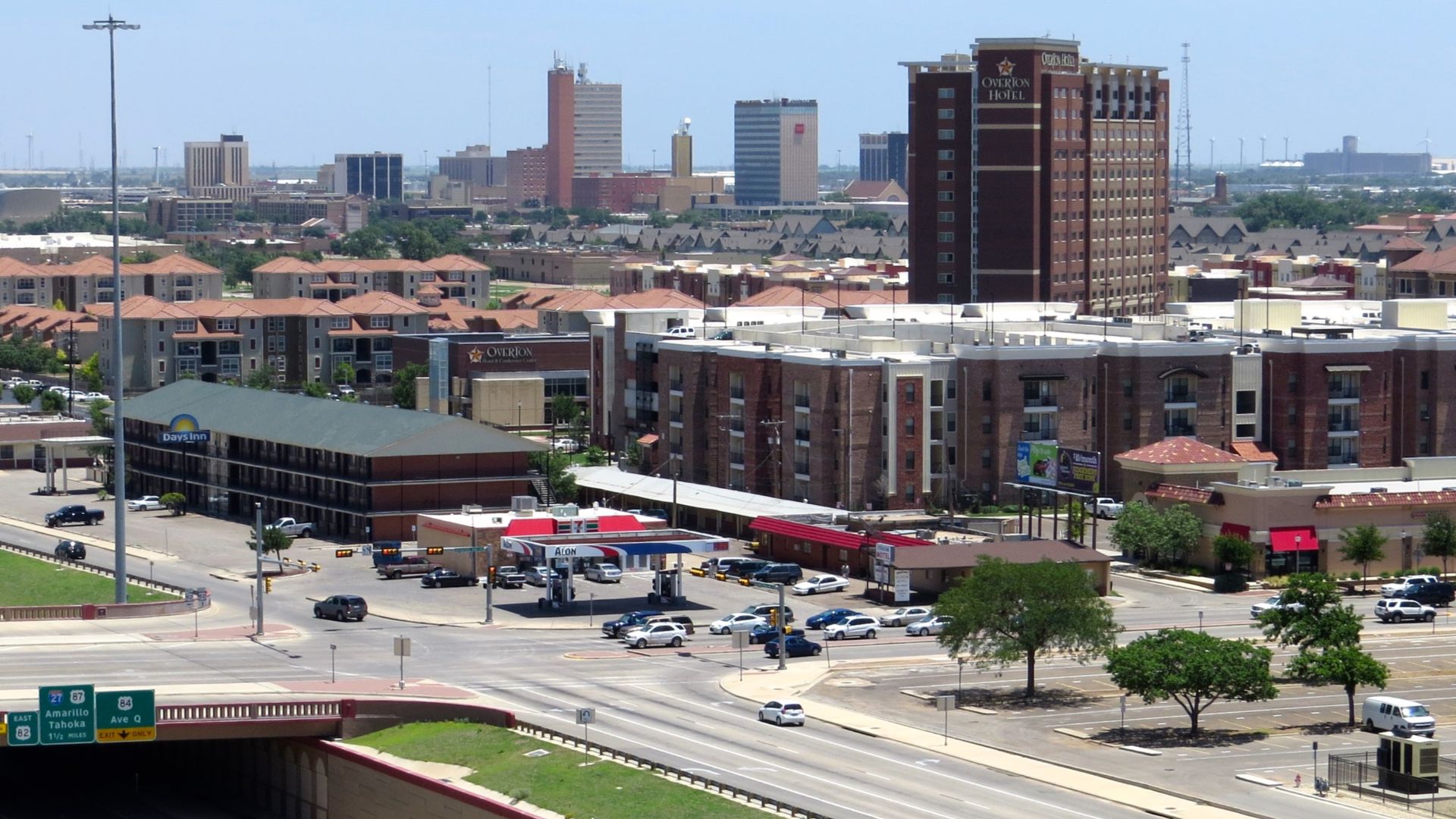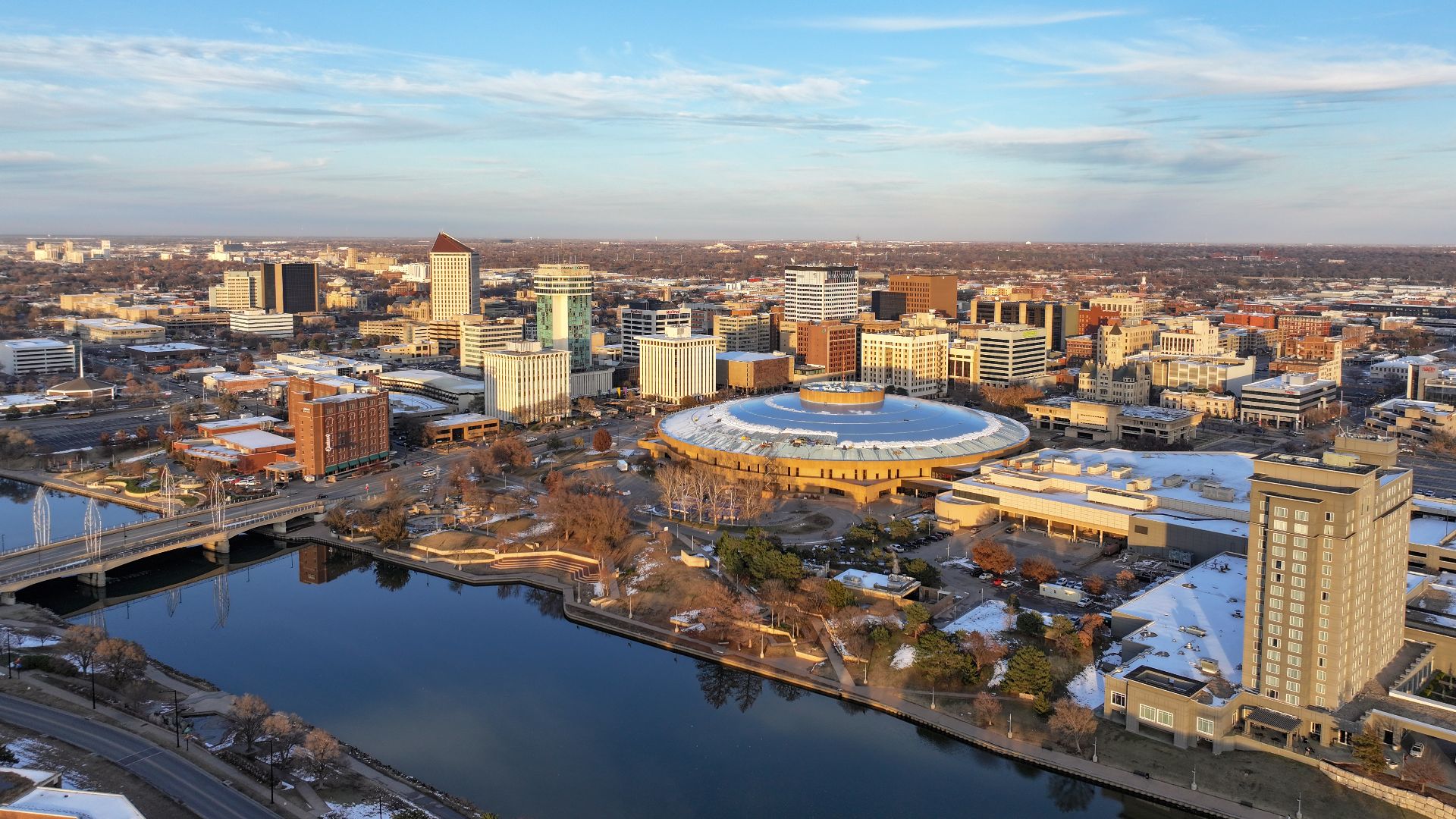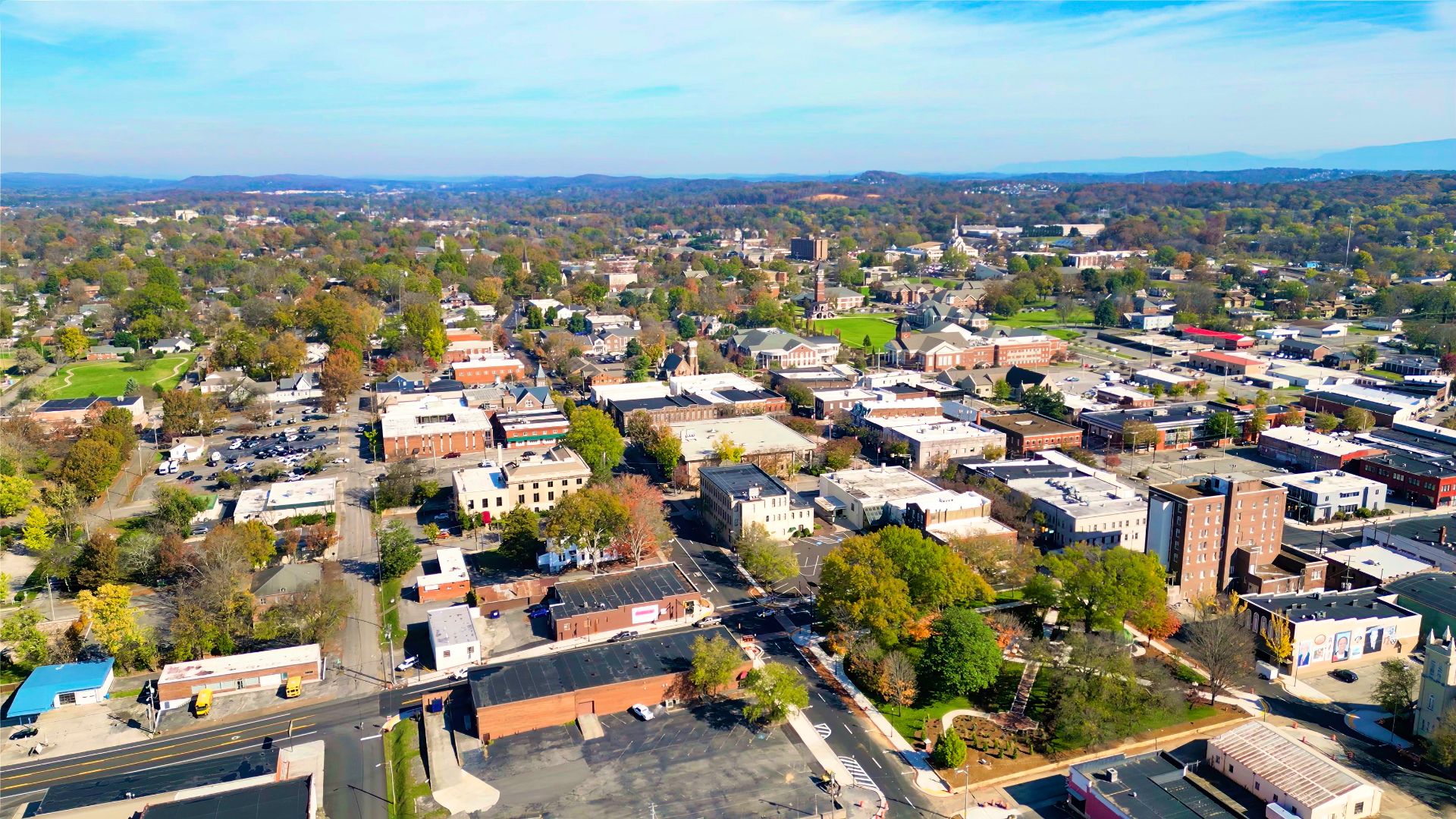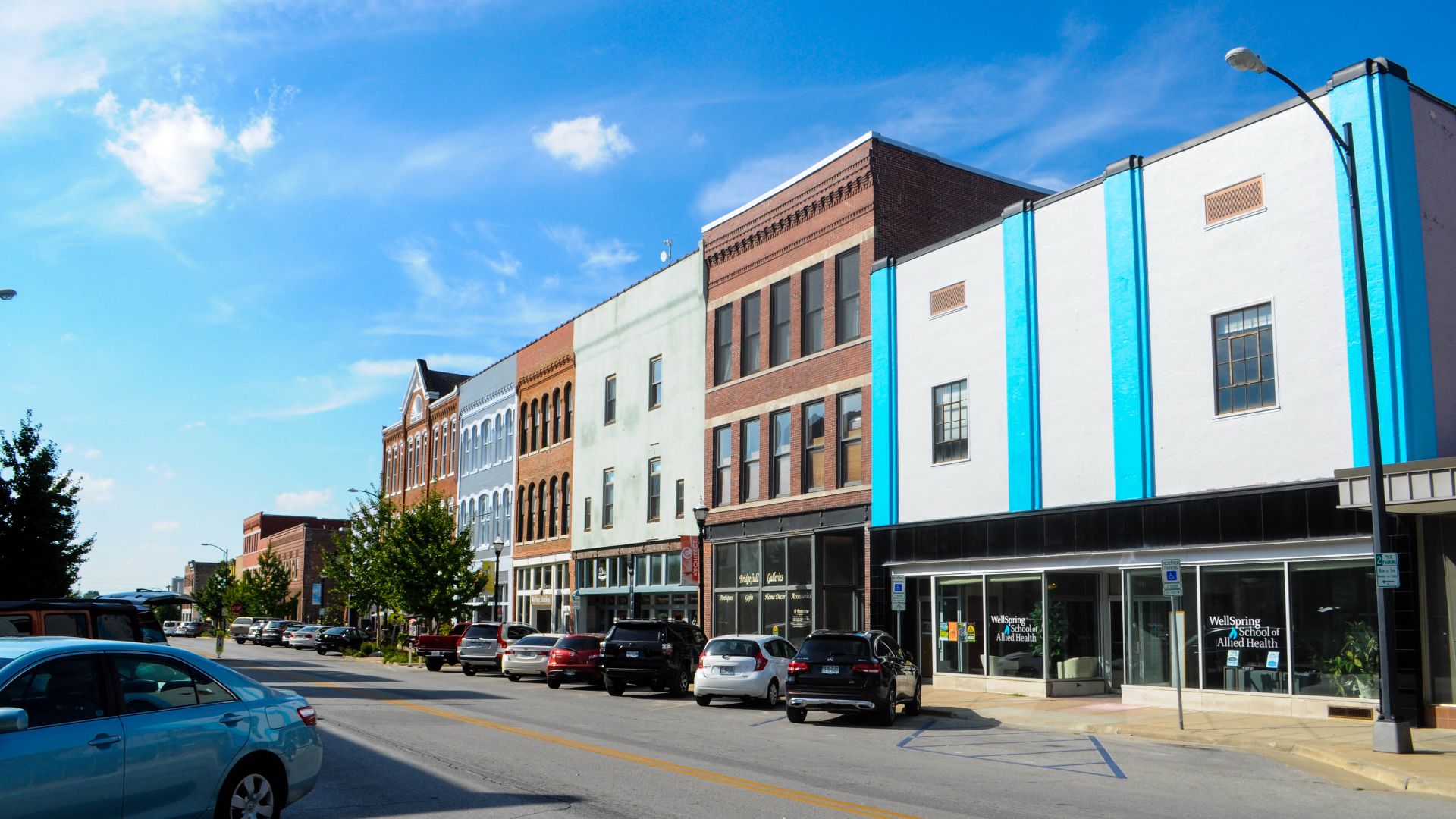Stretch Your Paycheck Without Shrinking Your Skyline
Big-city living doesn’t always mean big spending. We analyzed major U.S. cities with populations of at least 200,000, using data from doxoINSIGHTS, the U.S. Census Bureau, and housing-cost indexes to find where your dollar goes the furthest.
Each city’s Affordability Score reflects four weighted factors:
Average monthly household bill spend
Cost-of-Bills Index (COBI; 100 = U.S. average)
Percent of household income used for bills
Housing burden (ratio of housing costs to income)
Lower bills, lighter income burdens, and accessible housing boosted a city’s score. Here are the 25 most affordable big cities in America—ranked from least to most affordable (any guesses on number 1?).
 25: Lincoln, Nebraska (Affordability Score: 65)
25: Lincoln, Nebraska (Affordability Score: 65)
Average monthly household bill spend: $2,041
Cost-of-Bills Index (COBI): 96
Percent of household income used for bills: 37%
Housing burden: Manageable with steady income growth
Lincoln offers a stable economy, affordable rents, and Midwest calm without breaking the bank.
 Unknown authorUnknown author, Wikimedia Commons
Unknown authorUnknown author, Wikimedia Commons
24: Lubbock, Texas (Affordability Score: 67)
Average monthly household bill spend: $1,998
Cost-of-Bills Index (COBI): 94
Percent of household income used for bills: 36%
Housing burden: One of the lowest among Texas metros
Low housing costs and affordable utilities make Lubbock a quiet affordability winner.
 user:Redraiderengineer, Wikimedia Commons
user:Redraiderengineer, Wikimedia Commons
23: Wichita, Kansas (Affordability Score: 69)
Average monthly household bill spend: $1,981
Cost-of-Bills Index (COBI): 93
Percent of household income used for bills: 38%
Housing burden: Among the best in the Midwest
Wichita balances low costs with strong community vibes—an underrated gem.
 Quintin Soloviev, Wikimedia Commons
Quintin Soloviev, Wikimedia Commons
22: Fort Wayne, Indiana (Affordability Score: 70)
Average monthly household bill spend: $1,963
Cost-of-Bills Index (COBI): 92
Percent of household income used for bills: 34%
Housing burden: Consistently low compared to national average
Fort Wayne’s affordability and small-city charm make it a comfortable Midwest pick.
 Monster Wedge, Wikimedia Commons
Monster Wedge, Wikimedia Commons
21: Omaha, Nebraska (Affordability Score: 71)
Average monthly household bill spend: $1,959
Cost-of-Bills Index (COBI): 92
Percent of household income used for bills: 37%
Housing burden: Low, with strong job market
Omaha offers affordability without sacrificing opportunity or culture.
 Ron Reiring, Wikimedia Commons
Ron Reiring, Wikimedia Commons
20: Columbus, Georgia (Affordability Score: 72)
Average monthly household bill spend: $1,954
Cost-of-Bills Index (COBI): 91
Percent of household income used for bills: 39%
Housing burden: Among the lightest in the Southeast
Columbus pairs Southern hospitality with one of the friendliest price tags in Georgia.
 Brightbillmedia, Wikimedia Commons
Brightbillmedia, Wikimedia Commons
19: Des Moines, Iowa (Affordability Score: 73)
Average monthly household bill spend: $1,951
Cost-of-Bills Index (COBI): 91
Percent of household income used for bills: 35%
Housing burden: Low compared to other capitals
Des Moines mixes small-city ease with capital-city perks at reasonable costs.
 Tim Kiser (w:User:Malepheasant), Wikimedia Commons
Tim Kiser (w:User:Malepheasant), Wikimedia Commons
18: Louisville, Kentucky (Affordability Score: 74)
Average monthly household bill spend: $1,936
Cost-of-Bills Index (COBI): 91
Percent of household income used for bills: 34%
Housing burden: Manageable for both renters and homeowners
Louisville offers big-city amenities with distinctly affordable Southern living.
 Ken Lund from Reno, Nevada, USA, Wikimedia Commons
Ken Lund from Reno, Nevada, USA, Wikimedia Commons
17: Springfield, Missouri (Affordability Score: 75)
Average monthly household bill spend: $1,932
Cost-of-Bills Index (COBI): 90
Percent of household income used for bills: 37%
Housing burden: Notably low for a metro area
Springfield’s affordability continues to attract remote workers seeking savings.
16: Memphis, Tennessee (Affordability Score: 76)
Average monthly household bill spend: $1,912
Cost-of-Bills Index (COBI): 90
Percent of household income used for bills: 43%
Housing burden: Moderate, but property values remain accessible
Despite lower incomes, Memphis’s cost of living keeps it a bargain among big cities.
 Thomas R Machnitzki, Wikimedia Commons
Thomas R Machnitzki, Wikimedia Commons
15: Corpus Christi, Texas (Affordability Score: 77)
Average monthly household bill spend: $1,901
Cost-of-Bills Index (COBI): 89
Percent of household income used for bills: 39%
Housing burden: Below average for coastal metros
Coastal life on a budget? Corpus Christi makes it possible.
 Quintin Soloviev, Wikimedia Commons
Quintin Soloviev, Wikimedia Commons
14: El Paso, Texas (Affordability Score: 78)
Average monthly household bill spend: $1,784
Cost-of-Bills Index (COBI): 84
Percent of household income used for bills: 38%
Housing burden: Among the lowest in Texas
El Paso blends low bills and accessible housing with a welcoming community vibe.
13: Tulsa, Oklahoma (Affordability Score: 79)
Average monthly household bill spend: $1,756
Cost-of-Bills Index (COBI): 82
Percent of household income used for bills: 37%
Housing burden: Among the most affordable of all major metros
Tulsa’s affordability is drawing transplants from pricier cities nationwide.
 Nils Huenerfuerst, Wikimedia Commons
Nils Huenerfuerst, Wikimedia Commons
12: Huntsville, Alabama (Affordability Score: 80)
Average monthly household bill spend: $1,739
Cost-of-Bills Index (COBI): 81
Percent of household income used for bills: 34%
Housing burden: Manageable even with recent growth
Huntsville proves that high-tech jobs and low costs can coexist beautifully.
 No machine-readable author provided. Anivron assumed (based on copyright claims)., Wikimedia Commons
No machine-readable author provided. Anivron assumed (based on copyright claims)., Wikimedia Commons
11: Knoxville, Tennessee (Affordability Score: 81)
Average monthly household bill spend: $1,731
Cost-of-Bills Index (COBI): 81
Percent of household income used for bills: 35%
Housing burden: Light for a thriving metro
Knoxville’s low costs and quality of life make it one of Tennessee’s best-kept secrets.
 Will Fisher, Wikimedia Commons
Will Fisher, Wikimedia Commons
10: Toledo, Ohio (Affordability Score: 82)
Average monthly household bill spend: $1,682
Cost-of-Bills Index (COBI): 79
Percent of household income used for bills: 34%
Housing burden: Exceptionally low
Toledo’s balance of low expenses and small-city charm keeps it highly livable.
9: Akron, Ohio (Affordability Score: 83)
Average monthly household bill spend: $1,701
Cost-of-Bills Index (COBI): 80
Percent of household income used for bills: 33%
Housing burden: Consistently light
Akron offers affordability and community with easy access to major job markets.
8: Evansville, Indiana (Affordability Score: 84)
Average monthly household bill spend: $1,694
Cost-of-Bills Index (COBI): 79
Percent of household income used for bills: 36%
Housing burden: Well below national average
Evansville’s costs remain impressively low, offering true Midwestern value.
 WeaponizingArchitecture, Wikimedia Commons
WeaponizingArchitecture, Wikimedia Commons
7: Peoria, Illinois (Affordability Score: 85)
Average monthly household bill spend: $1,682
Cost-of-Bills Index (COBI): 79
Percent of household income used for bills: 34%
Housing burden: Manageable with steady income levels
Peoria gives residents the perks of a sizable metro without big-city prices.
6: Rockford, Illinois (Affordability Score: 86)
Average monthly household bill spend: $1,677
Cost-of-Bills Index (COBI): 78
Percent of household income used for bills: 35%
Housing burden: Among the lowest in the Midwest
Rockford’s mix of low bills and stable housing puts it squarely in the affordability spotlight.
 Alexbaumgarner, Wikimedia Commons
Alexbaumgarner, Wikimedia Commons
5: Montgomery, Alabama (Affordability Score: 87)
Average monthly household bill spend: $1,668
Cost-of-Bills Index (COBI): 78
Percent of household income used for bills: 33%
Housing burden: Exceptionally favorable
Montgomery delivers Southern charm and urban amenities without the sticker shock.
 Carol M. Highsmith, Wikimedia Commons
Carol M. Highsmith, Wikimedia Commons
4: Jackson, Mississippi (Affordability Score: 88)
Average monthly household bill spend: $1,664
Cost-of-Bills Index (COBI): 77
Percent of household income used for bills: 36%
Housing burden: One of the lowest nationwide
Jackson’s low costs make it one of the most affordable big cities in the South.
 chmeredith from Jackson, MS, USA, Wikimedia Commons
chmeredith from Jackson, MS, USA, Wikimedia Commons
3: Mobile, Alabama (Affordability Score: 89)
Average monthly household bill spend: $1,659
Cost-of-Bills Index (COBI): 77
Percent of household income used for bills: 34%
Housing burden: Extremely favorable
Mobile proves you can live by the coast without paying coastal prices.
 Altairisfar, Wikimedia Commons
Altairisfar, Wikimedia Commons
2: Cleveland, Ohio (Affordability Score: 90)
Average monthly household bill spend: $1,735
Cost-of-Bills Index (COBI): 82
Percent of household income used for bills: 41%
Housing burden: Very favorable relative to national averages
Cleveland offers an unbeatable blend of affordability, culture, and revitalization.
 Harrison Keely, Wikimedia Commons
Harrison Keely, Wikimedia Commons
1: Dayton, Ohio (Affordability Score: 91)
Average monthly household bill spend: $1,673
Cost-of-Bills Index (COBI): 78
Percent of household income used for bills: 32%
Housing burden: Among the lowest in the U.S.
Dayton takes the top spot for keeping living costs low and quality of life high—a true affordability champion.
 PrettyFlyForaGemini, Wikimedia Commons
PrettyFlyForaGemini, Wikimedia Commons
You Might Also Like:
Ranking The States With The Best Access To Nature, According To Data
Ranking The Best States For Fishing—According To Data
The States With The Lowest Crime Rates—Ranked According To Data












